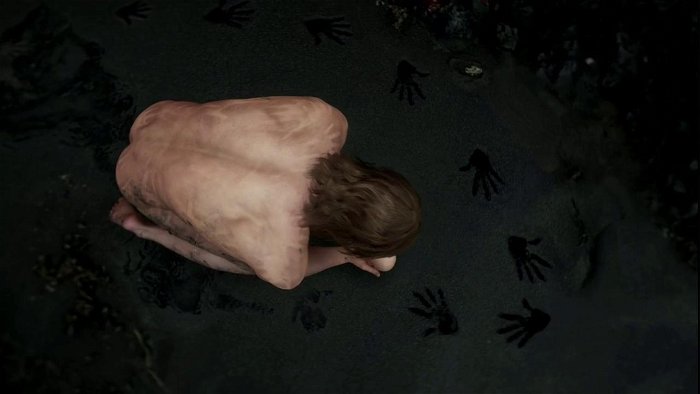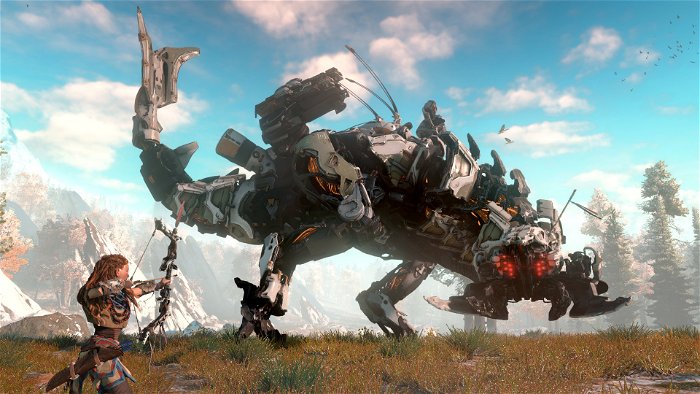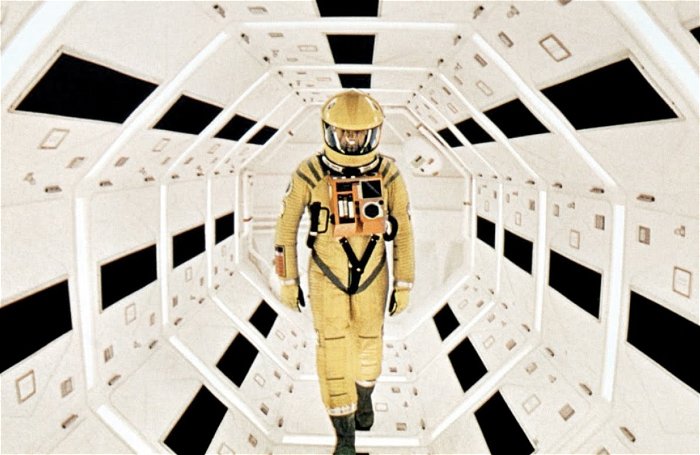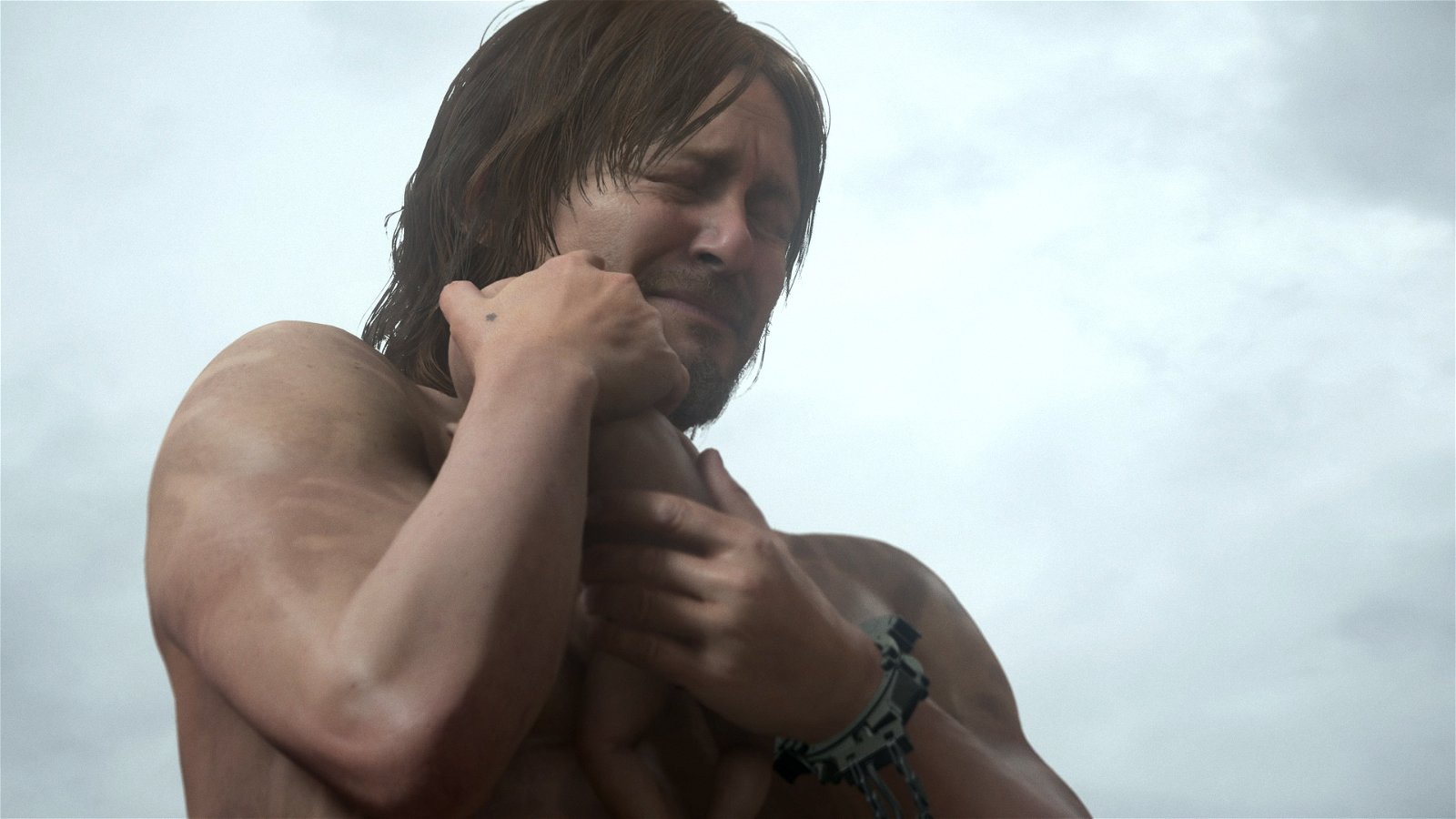Kojima’s departure from Konami came about like a sudden illness. It began with the notorious case of P.T., when a small cough—rumours that the game was going to be cancelled—turned into a wild fever. Talks of internal struggles between the creator and the publisher, along with Kojima’s sudden disappearance from the public stage, snared speculators with an itchy rash: the idea that such a long history between Kojima and Konami could collapse. And when the black plague came, everything ended in what felt like the span of a single breath: Kojima and Guillermo Del Toro’s creative horror-child, Silent Hills, was aborted prematurely. And, shortly after the release of Metal Gear Solid V, so was Kojima.
But this isn’t the story of the man’s fall. It is the story of how he gets back up again and finds a therapeutic reawakening on his own two feet. It culminates with Death Stranding, a game that is like a black monolith come down from the sky. One can feel like a monkey trying to figure it all out, with its god-like figures, paternally-born babies, and beached whales. But perhaps staring into the world of Death Stranding is like looking into a Rorschach painting through Kojima’s eyes; that somewhere in its inked madness is a story of recovery. An attempt at psychoanalysis begins with his post-Konami journey—a journey that first took him westward.

A Recovery in the West
“Unfortunately Kojima-san needed to leave his technology with his ‘former employer,’” Mark Cerny, the lead architect of the PlayStation 4, explained at the first PlayStation Experience panel after Kojima’s departure. The mere reference to Konami incited a round of enthusiastic boos, after which he continued, “So we went on a quest to find an engine for the game.” Cerny had taken Kojima on a world tour of game studios earlier that year. They saw the performance capture studio where The Last of Us and The Order: 1886 were filmed, along with high-profile companies the likes of Quantic Dream, Crytek, Media Molecule, EA Dice, Mojang, Massive, Naughty Dog, and Sucker Punch. They weren’t just looking for the best technology; they were looking for collaborators—people with the same ideology and approach to technology; to “corporate culture.”
What they found were companies with openness, an idea that is seemingly alien to the execs at Konami. To illustrate this, a report by Nikkei painted a picture of Konami as a “workplace where employee movement is monitored by cameras and developers are assigned to menial jobs if they’re considered no longer useful” (via Polygon). But the American and European studios were different. They were places where kitchens were hubs of collaboration; where people dressed down in casual clothes and could walk up to anyone to start a conversation. At a time when Kojima’s voice was most squelched, they lent him their ear. It was, simply put, what he needed. It was during those talks that he met Guerilla.
The Guerilla with the Gift
Guerrilla Games is a studio based in the Netherlands with employees of 30 different nationalities. Their latest game, Horizon Zero Dawn, came about from a pitch between 40 different people. They are a truly heterogeneous, global community, and the company eventually chose to take Kojima into their gorilla-sized arms. The dictatorship, auteurship, and Japanese homogeneity that characterized Konami is half a world away from the Dutch studio. It’s a studio that will partner up hand-in-hand with Kojima to exchange the information and work needed to develop Death Stranding and the technology behind even more games to come. Guerilla has even taken on a “satellite” branch of Kojima’s new company to nurture the new relationship face-to-face. If Kojima’s post-Konami journey is his therapy, then Guerilla is his psychologist.

Moreover, Hermen Hulst, Guerilla’s managing director, provided the prescription that Kojima needed: he handed him the entire source code to their long-in-development “Decima” engine—on a USB stick. With it, Kojima could finally establish Kojima Productions. Presented in a simple wooden box, the gift was sent before any contract was even signed as a way of reassuring Kojima that their new partnership would be different from his experiences at Konami. “That was the instinct” Hulst said, “for the sake of making games—all of us—let’s just share that with Kojima-san’s team.” The engine is named after an island called Dejima, where, during a self-imposed isolationism that prohibited trading with other countries, it acted as a critical nexus of trade between the Netherlands and Japan during the Edo-period. It formed a relationship solidified in history, and its spirit continues with Kojima Productions and Guerilla’s collaboration. In a quote that perhaps best illustrates their friendship, Kojima explains, “We start telling them we’re aiming for the Moon and Mars. And Guerilla came and said, well, let’s go to Jupiter together.”
Kojima Productions is Kojima’s Safe-Haven
“Media Molecule told me that the kitchen is crucial,” Kojima told Eurogamer in an interview. He took the tip from the English studio—which is best known for the zany creativity of their LittleBigPlanet series—and built his own studio with this newly acquired social philosophy in mind. In fact, the first year of Kojima Productions was solely dedicated to people. Kojima wanted applicants from around the world and from different fields. He hired people who worked on modelling for movies, people who made camera lenses, and authors of books. This people-first philosophy even shows itself in the actors he hires. In an interview with Mads Mikkelsen, Kojima said that he wants to bring the actor’s sensibilities into the game, something that he hasn’t prioritized before. Jokingly he said that players might see the Mikkelsen character suddenly break out into ballet or cook food.
So, with the support structure of people around him, the remaining piece of the puzzle was to create an environment that could make freedom thrive; a Konami antithesis where someone could just walk up to someone else and start a conversation. In this environment, Kojima Productions would be a therapeutic safe haven—a womb of unshackled creativity where video games can gestate and develop. And the long entryway that separates the studio with the outside world is all the proof needed to show that Kojima and his team succeeded. It is completely covered in white, with floors lit-up in a pale light reminiscent of 2001: A Space Odyssey and walking through it is like meditating before a therapy session. A statue of Kojima Production’s mascot, the astronaut Luden, stands like a visual mantra reminding passersby of where they are going—to Jupiter. The hallway is described as a decompression zone where workers will leave behind the bustle of everyday life and enter the studio in earnest, an isolated echo chamber where different voices are heard at equal measure. “I was right that the perspective wasn’t wrong,” Kojima tweeted about the transition to the new studio, “It was the beginning of bonding everything again.”

A Nightmare Called “Death Stranding”
The song used in Death Stranding’s reveal trailer bellows: “Waiting for my words. Seen but never heard. Buried underground. But I’ll keep coming.” Low Roar’s song, “I’ll Keep Coming,” seems to perfectly express the underlying power of Kojima Production’s first game. In the trailer, after mourning a deceased baby lying nearby, Norman Reedus’ character stands up to see a desecrated shore. Dead sea life is washing up on land, and five god-like beings float in the sky above him, equally spread apart to an inhuman exactness. The teaser consolidates images together like a mind merging bad memories into a nightmare, and may very well be the culmination of Kojima’s psyche post-Konami and his way of dealing with it. The dead baby evokes, with symbolic familiarity, the prematurely aborted Silent Hills. Konami even described the game as “embryonic.” The gods in the sky seem to conjure up the utter powerlessness one might feel from facing the gargantuan task of starting a game studio from scratch—the more cynical might even see them as Konami executives.
It is a threatening sight to behold, but Reedus’ character is unafraid. There is ferocity in his eyes; a hidden power that roars along with the song, “I’ll keep coming.” The hero of Death Stranding has a power to combat this nightmare. Contrary to the norm, where a game’s main mechanics are often just keeping people away with guns, one of Death Stranding’s main systems is to pull people close with “ropes.” It remains to be seen what these ropes will look like and how exactly they will work, but presumably, this “rope” mechanic has something to do with the umbilical cords seen in the dead sea-life and the “strands” in Death Stranding. Needless to say, they represent the ability to form connections with other people that Kojima has found strength in after his time at Konami and it makes him unafraid of the monumental task ahead. They are the strands that stretch westward to Guerilla; a skip over the pond to Media Molecule in England; America-bound to Naughty Dog and the tech-mavericks of California—across cyberspace to the fans at home.

A friend of Elon Musk’s once told him that beginning a start-up is like staring into the abyss while chewing glass. Maybe Death Stranding is simply Kojima’s version of that metaphor. And because he is able to spill his heart out into a game where a naked Norman Reedus stares into an aquatic apocalypse with beached whales and five faceless gods coming for him, Kojima can finally unload his mind into his work and reach a new Zen place where things can happen naturally and clearly. With Kojima helming one of the biggest new studios in recent memory, the event feels inaugural. It sounds like for Kojima Productions, from this day forward, it’s going to be people first.




